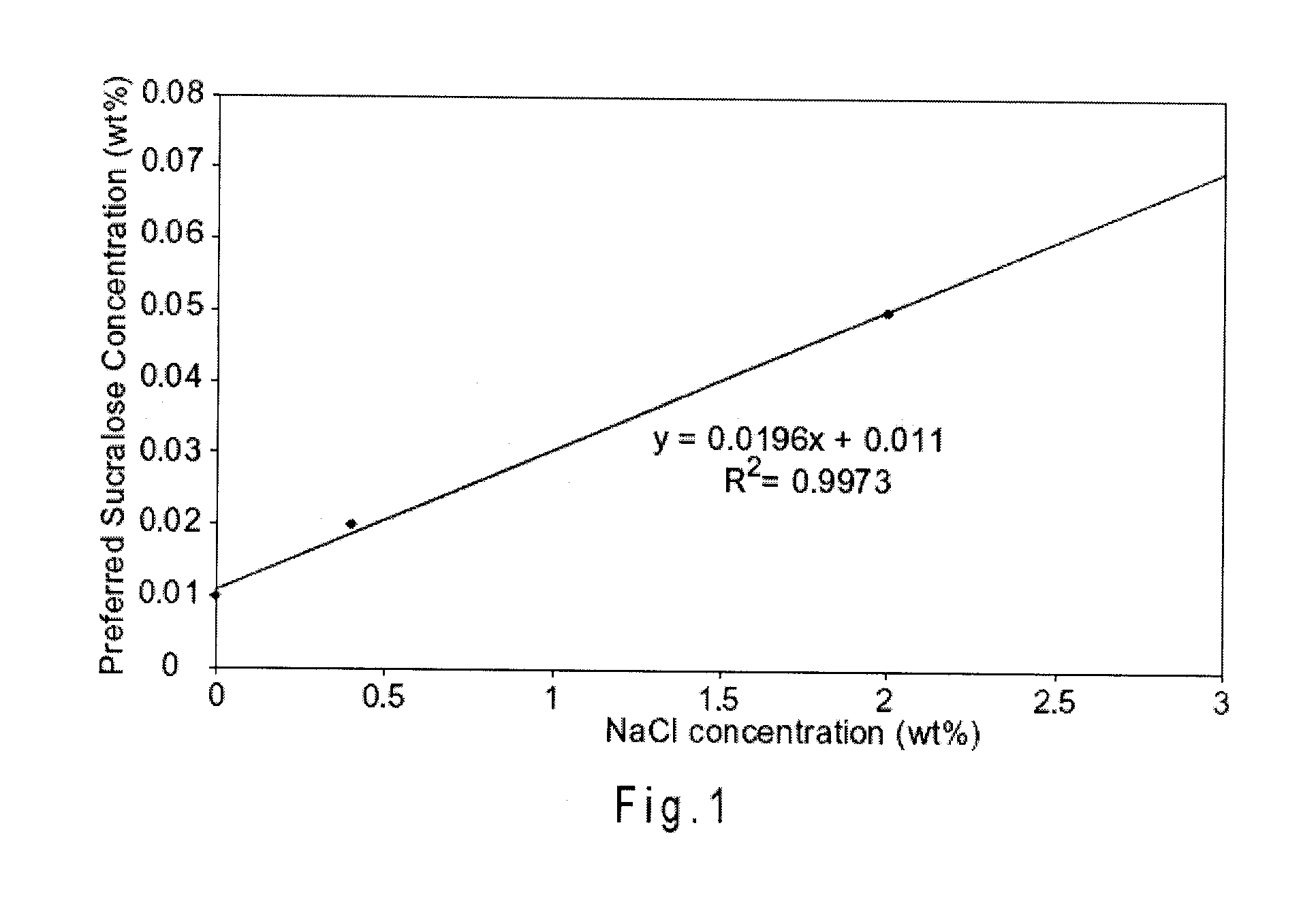Reduction of saltiness with sweeteners
a technology of sweeteners and salt, which is applied in the field of saltiness reduction with sweeteners, can solve the problems of not being able to tolerate the ingestion of the complete initial dose of the preparation, and achieve the effect of improving the palatability of a bowel cleanser
- Summary
- Abstract
- Description
- Claims
- Application Information
AI Technical Summary
Benefits of technology
Problems solved by technology
Method used
Image
Examples
example 1
[0034] Sucrose, Saccharin, Sucralose, Aspartame, Ace-K, Thaumatin (Talin), Neohesperidine Dihydrochalcone (NHDC), and Trehalose were tested for stability in FLEET® PHOSPHO-SODA®. Of these sweeteners, Sucralose, Ace-K, and Saccharin were found to have acceptable stability in the laxative. While the other sweeteners retained their effectiveness when mixed, their effectiveness diminished over time.
example 2
[0035] Phosphate salt bowel cleansers were prepared for preference comparisons. An exemplary composition was prepared as shown in the table below. The percentages are on a weight / weight (w / w) basis.
TABLE 1IngredientAmount (%)Purified Water55.7Flavor - Cola WONF FAES3891.3SweetenervariousPhosphoric Acid (75%)16.6Dibasic Sodium Phosphate25.4Glycerin0.8Sodium Benzoate0.03
example 3
[0036] To determine whether test subjects preferred the taste of salty liquids with or without a sweetener, a hedonistic type preference test with 40 test subjects was conducted. Each subject was asked to rate two salty liquids on a scale of 1 to 9 with 1 being highly preferred and 9 being least preferred. Two percent NaCl / water solutions were prepared that included 1.29% ginger ale flavor.
[0037] The first NaCl / water solution (T in Table 2 below) included no sweetener, while the second NaCl / water solution (G in Table 2 below) included 0.13% Sucralose. Similarly, unsweetened (J in Table 2 below) and sweetened (K in Table 2 below) phosphate salt bowel cleansers were prepared. In comparison to the phosphate salt bowel cleanser of Example 2, these cleansers included 1.3% of ginger ale flavor instead of Cola.
TABLE 2Salty LiquidTest SubjectTGJK15727237549357.54.561878.5487598.5410731196128613931477152.58.5168.51.5173.52.51832198.58.520872191223.58.5235.55.5247.56.5258.51268.56.52785287...
PUM
| Property | Measurement | Unit |
|---|---|---|
| Fraction | aaaaa | aaaaa |
| Fraction | aaaaa | aaaaa |
| Fraction | aaaaa | aaaaa |
Abstract
Description
Claims
Application Information
 Login to View More
Login to View More - R&D
- Intellectual Property
- Life Sciences
- Materials
- Tech Scout
- Unparalleled Data Quality
- Higher Quality Content
- 60% Fewer Hallucinations
Browse by: Latest US Patents, China's latest patents, Technical Efficacy Thesaurus, Application Domain, Technology Topic, Popular Technical Reports.
© 2025 PatSnap. All rights reserved.Legal|Privacy policy|Modern Slavery Act Transparency Statement|Sitemap|About US| Contact US: help@patsnap.com


